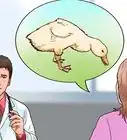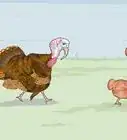X
wikiHow is a “wiki,” similar to Wikipedia, which means that many of our articles are co-written by multiple authors. To create this article, 17 people, some anonymous, worked to edit and improve it over time.
There are 8 references cited in this article, which can be found at the bottom of the page.
This article has been viewed 196,535 times.
Learn more...
Geese, like ducks, are relatively easy to care for. Seeing them swimming on your pond and coming up to you to be fed is truly rewarding and relaxing. This article will discuss how to care for geese, how to enjoy them, and how to give them a healthy, happy life.
Steps
-
1Evaluate your desires for raising geese. Just like dogs, horses, and nearly every other animal, different geese are good for different people. You may desire geese for pets, guard animals, meat, and more.[1] It is important to get the correct breed of goose for your life and meet their needs.[2] Do not be afraid to ask questions, as questions produce answers.
-
2Read about the care of geese and other poultry.[3] You will find the article How to Care for a Pet Duck very helpful, as much of the information is true for both ducks and geese. Storey's publishing also has good books on the care of chickens, ducks, etc. (See Recommended Reading.)Advertisement
-
3Select a breed. Some geese are considered aggressive, some good guard animals (they can really make a racket!), and others make great pets. It all depends on the breed and how you raise them. Ask friends who have the birds, farmers, vets, whoever you can find. Get their advice on what goose breed is right for you.[4]
-
4Acquire the geese. You should get at least a pair and more if you so choose. For calmer breeds, it is fine to acquire them as adults or as goslings. If you have chosen a more aggressive breed, it may be best to acquire them as goslings. It's best for a goose to always have a mate. If it does not, you should acquire more geese or even several ducks so your bird will not get lonely and distressed. If you choose to buy the geese, check out the breeder. The cages should be clean, the water fresh, and the smell shouldn't be too overpowering. The animals should look relatively clean, healthy, and alert. Stick your hands in the pen. If they react, whether running away or coming closer out of curiosity, this is usually a sign that they are healthy. It is not, however, hard at all to find free geese (and ducks). Just ask your friends if anything comes up. Often people have animals they can't care for anymore.
-
5Bring them home. They should be brought home in a relatively large dog carrier that they cannot break free from. You will most likely need to hose the carrier off when you get home. The geese will be very upset from their capture and ride.
-
6Clip their wings.[5] You will save a lot of time and energy if you do this before releasing them. This is a 2-3 person job. Gently hold the neck (don't let it peck your face) and firmly (without squeezing) hold its body close to you. Male geese are very strong, so be prepared. Have one person gently take the wing and unfold it, cutting the shorter feathers at the base of the wing. Do not over cut and be extremely careful, because the animals will be struggling while you do this. You do not want to make them bleed; if you do, they may die.
-
7Release the geese. It is best if you have a pond. Birds are safer in the water than in the middle of a pasture. Usher them to the pond in the morning. You can use a rake to guide them, but do not hurt them. This should be a pleasant experience. If you are able, usher them back to their pen/shed/barn before it gets dark. The next day, you should be able to simply let them out and leave them to find the pond on their own. You shouldn't have to bring them back to their pen again.
-
8Buy quality poultry food. Geese will spend much time eating around their pond, as well as grazing on pasture grass. At the same time, just like humans, they need a balanced diet that satisfies their need for vitamins and minerals. Their food should be specifically designed for poultry (geese, ducks, etc.) and should come from your local clean feed store or Tractor Supply. You can add oats and grains to your goose's diet in the winter. If it is a gosling, feed gosling or duck mash to it.
-
9Develop a feeding schedule. It may take a week or even two, but if you fed your geese while they were in the pen, they should learn that when they come back to the pen, they get food. Whenever you see the geese walking back to their pen, encourage them closer and feed them. Don't scare them off; try to watch at a good distance. After about a week of them coming to the pen to be fed, change their schedule. Now you should only feed them once a day, when it isn't dark outside. If they come up to the pen at random hours, resist the urge to feed them and only feed them at the time you determined. Stick to that schedule like a rule of life and they will learn quickly. It helps if there are other geese or ducks that come to the pen to be fed at the same time. Make sure there is enough food for them. If they are hanging around after they've finished, or if they are very thin and sickly, it likely means they are still hungry, so try feeding slightly larger rations until you are satisfied. If they look fat or are not eating all the food you set out, slightly reduce the rations until you are satisfied.
-
10Supply fresh water at all times.[6] This is often overlooked, considering the animals have a pond. However, this water can be quite dirty and should not be the birds' only source of fresh water. It's best if there can be running water, such as a stream, but this is often not possible. Instead, you should set out containers of clean water near their food. These should be refilled daily, regardless of how much water is left. Failing to dump them out can result in disgusting water, unhealthy living conditions, foul odors, and mosquito larvae. When the geese are young, they should be offered water in shallow troughs, as they cannot get wet until their mature feathers come in. If they do get wet, towel dry them and keep them warm. Failing to do so will result in chilling and even death in extreme cases.
-
11Supply adequate shelter.[7] Ducks and geese alike require shelter from storms, wind, and direct sunlight. They receive some shelter from the sun by sitting under large trees. However, it is recommended that you supply a small 3-sided shed, open hutch/pen, large awning over your barn, or even tarp stretched between two trees. They must have an area that is dry and free of drafts. Clean straw or bedding should be placed on the ground during cold weather or storms. The RSPCA recommends at least 1 square meter of ground area per goose.[8] They should be able to come and go freely and be able to move around comfortably.
-
12Protect your geese from predators.[9] This is perhaps the most difficult step, because most of this is out of your hands. Some things are just out of your control. However, there are ways you can protect your geese and other poultry from predators. If you have the time, consider locking your geese in the adequate shelter described in Step 11 at night and letting them out during the day. Be aware that the shelter will be a mess and you will have to do a bit of cleaning. Simply scrape up droppings with a shovel and toss them outside, away from the shelter. Supply clean hay, bedding, or straw, dump waters outside and refill them. Clean food containers if necessary. Predators include bobcats, coyotes, dogs, and more. It is strongly advised that you do not shoot the predators, as you could accidentally shoot a goose, a neighbor's pet, or a harmless animal.
Advertisement
Community Q&A
-
QuestionOur bigger goose has become really aggressive, chasing and biting. What might be the reason for this?
 Community AnswerAt the start of mating season (and during mating season) geese are very protective of their eggs. You have two choices: you can either walk away from the goose the moment it starts showing aggression, or you can make very strong eye contact (do NOT let up for even a second), stay calm and walk away (perpendicular movements if you can). If you are confident enough, you can also grab the goose and hold him/her under your arm (don't hurt it) until it calms down.
Community AnswerAt the start of mating season (and during mating season) geese are very protective of their eggs. You have two choices: you can either walk away from the goose the moment it starts showing aggression, or you can make very strong eye contact (do NOT let up for even a second), stay calm and walk away (perpendicular movements if you can). If you are confident enough, you can also grab the goose and hold him/her under your arm (don't hurt it) until it calms down. -
QuestionHow old does the goose have to be to let go in the wild?
 Community AnswerNever leave your pet goose in the wild. It is used to domesticity and is now dependent on your care. As such, there is never an appropriate time to release a domesticated goose into the wild.
Community AnswerNever leave your pet goose in the wild. It is used to domesticity and is now dependent on your care. As such, there is never an appropriate time to release a domesticated goose into the wild. -
QuestionWhat can I do if my goose stops moving and becomes very cold?
 Community AnswerIf it's a young goose with its feathers not developed, try a heat lamp. If that doesn't work, then your bird might be sick or depressed. Spend time with the young ones, if they are orphans. They get lonely and won't eat.
Community AnswerIf it's a young goose with its feathers not developed, try a heat lamp. If that doesn't work, then your bird might be sick or depressed. Spend time with the young ones, if they are orphans. They get lonely and won't eat.
Advertisement
Warnings
- Do not chase your geese or they won't trust you. This will also make them scared to come to the barn for feeding time and they could starve to death.⧼thumbs_response⧽
- Remember that geese, ducks, chickens, and other birds are prey. You will likely experience quite a few deaths. Try to make the time they have on earth as heavenly as possible for them. Besides following this article, there is not much else you can do to protect them.⧼thumbs_response⧽
Advertisement
Recommended Reading
- "Storey's Illustrated Guide to Poultry Breeds by Carol Ekarius". This book contains color photography, a brief history, and a detailed description of more than 120 breeds of barnyard fowl, including geese and ducks.
- "The Book of Geese: A Complete Guide to Raising the Home Flock" by Dave Holderread. Often referred to as the "goose bible", it is used for both beginners and experts.
- "Starting with Geese" by Katie Thear. A new book on goose care on a small or commercial scale.
References
- ↑ https://www.wideopenpets.com/reasons-to-raise-geese/
- ↑ https://www.dpi.nsw.gov.au/animals-and-livestock/poultry-and-birds/species/geese-raising/breeds-and-breeding
- ↑ https://commonsensehome.com/homestead-geese/
- ↑ https://livestockconservancy.org/images/uploads/docs/GooseChart.pdf
- ↑ https://www.youtube.com/watch?v=wh-tJTQ7ie0
- ↑ http://politicalanimal.org.uk/wp-content/uploads/2014/11/Welfare-of-animals-on-allotments.pdf
- ↑ https://www.farmsanctuary.org/wp-content/uploads/2012/06/Animal-Care-Duck-and-Goose.pdf
- ↑ http://politicalanimal.org.uk/wp-content/uploads/2014/11/Welfare-of-animals-on-allotments.pdf
- ↑ https://poultrykeeper.com/general-waterfowl/beginners-guide-keeping-geese/
About This Article
Advertisement
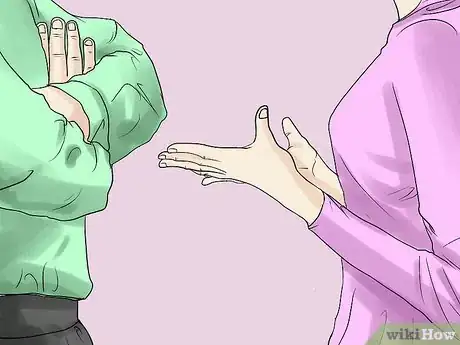
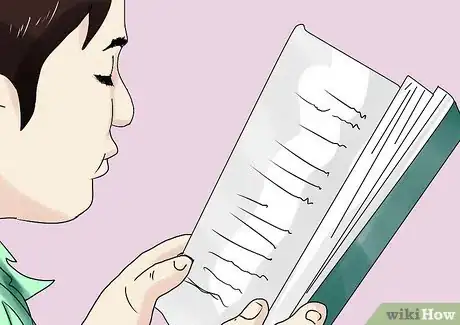
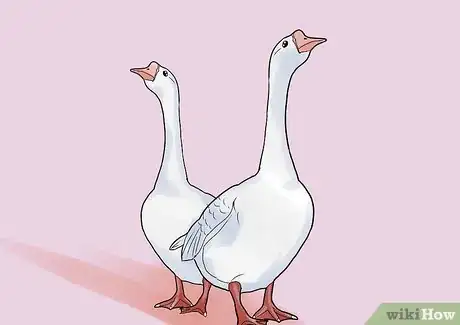
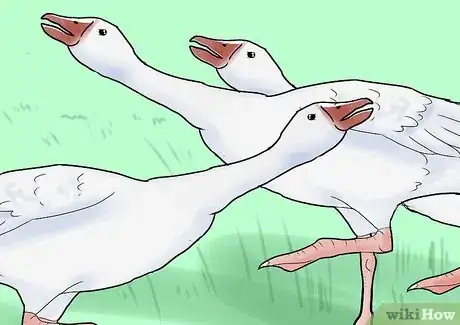
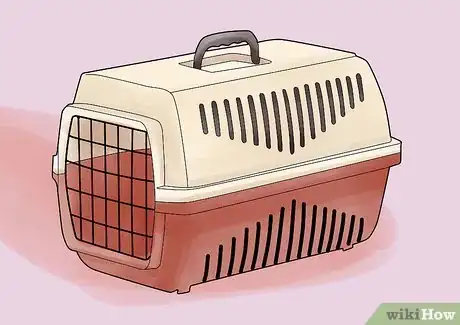
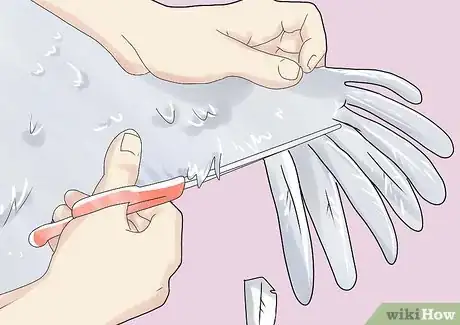
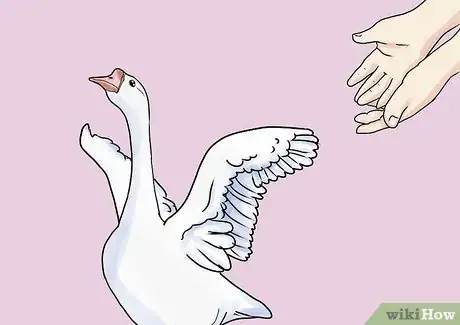
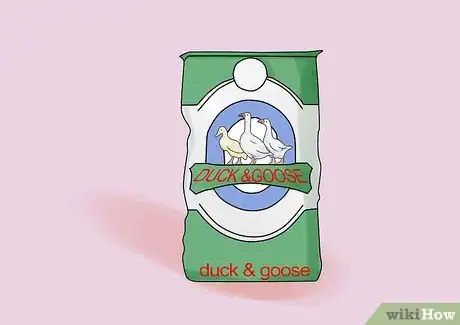
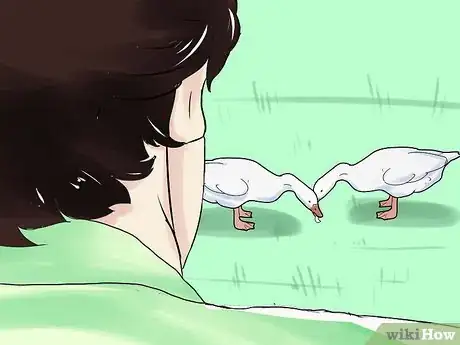

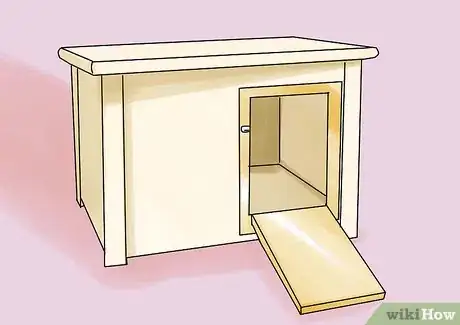
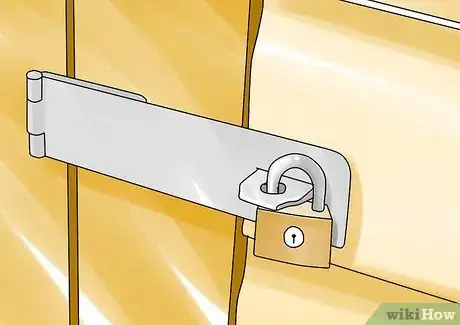

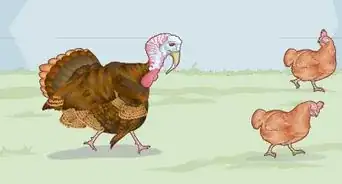
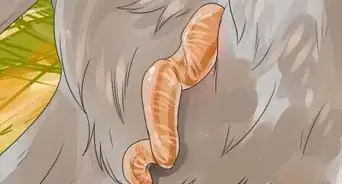

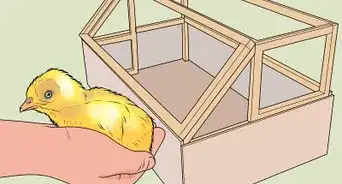
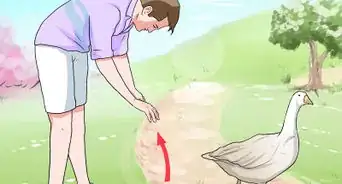
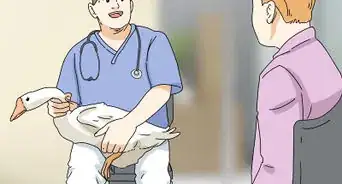
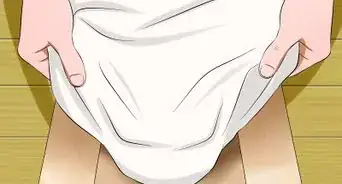


-Step-18.webp)






